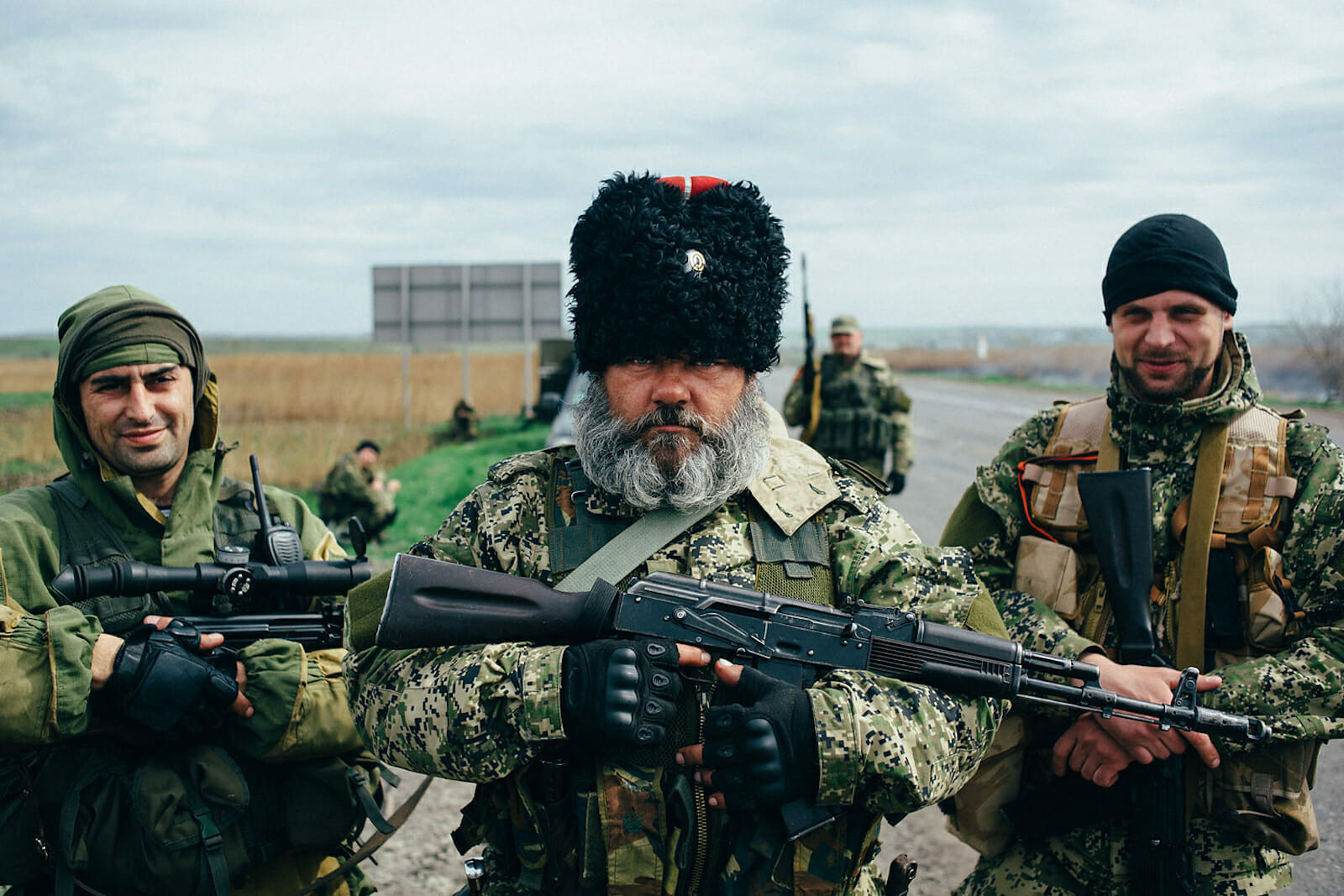
Looking Behind the Proxy Curtain
It seems that no day or hour goes by without someone in the news cycle mentioning proxies, proxy action, or proxy warfare regarding one or more parties allegedly on the brink of war. Some note that the Cold War was typified by proxy warfare, which enabled great power competition while managing the risk of escalation to open warfare among those great powers and potential nuclear exchanges. During the Cold War, proxies were considered a buffer — a safeguard to nuclear confrontation — while in this century, proxies are described as a destabilizing factor that could lead to major regional conflict. Can both of these assertions be true – or are they both erroneous? What is a proxy? Why would governments promote the use of military force that they cannot directly control? What can be done to control those risks?
The Cambridge Dictionary defines a proxy as “authority given to someone to act for you.” Most people who have varying amounts of commercially traded stocks do not go to the shareholders’ meeting in person; instead, they sign a proxy authorization. That proxy is acting as the agent of the shareholder (the “Principal”).
Whether it is a shareholder’s vote or some other action, the Principal accepts responsibility for the authority given to the proxy. Proxy military forces are similar. The difference is that governments typically use proxies to avoid responsibility. For example, in conventional armed conflict, Country A (the Principal) supports armed action by Country B (its authorized proxy) against Country C. The various Arab-Israeli Wars are one example of this; Country A being the Soviet Union, Country B being Egypt and Syria and Country C as Israel. Israel itself was proxy for another Principal: the United States. In asymmetric operations, Country A might employ mercenaries or other non-state armed groups to disrupt Country C. Examples include the various activities of mercenary Bob Denard in French-speaking African countries, allegedly operating on behalf of the French government. Other examples of proxy war filled this time period. Even popular entertainment, such as the TV series Star Trek depicted proxy warfare used by the great interstellar rivals. Proxies were like actors on a stage directed by Principals, who called the cues from behind a curtain. This theater allowed the Principals to avoid direct superpower conflict.
In the 21st century, the use of proxies tends to reflect the asymmetric model. These proxies include mercenaries, other non-state armed groups such as warlords, local militias, “foreign fighters,” insurgents, and commercial entities – including Private Military and Security Companies (PMSCs.) As with Denard’s Les Affreux mercenary bands in Africa, these proxies do not appear to be, and may not be, under the strict control of their Principals. Rather than puppets on strings, they are actors inclined to improvisation. These actors include Russian sponsored groups in Ukraine, such as Cossacks, the Night Wolves, and the Wagner Group — which is also active in a growing number of other countries. Iranian sponsored actors feature various contingents of Iran’s foreign legions in Syria, including the Afghan Fatemiyoun, Lebanese Hezbollah, and the Pakistani Zeinabiyoun Brigade.
Countries use proxies for several reasons, but primary among these is the perception of deniability. Proxies operate under a fiction of being independent of their Principal. The Principal can reap the benefits of success while denying responsibility for failures or atrocities. United Arab Emirates’ use of mercenaries in Yemen, Sudan’s use of Janjaweed in Darfur and Russian quasi-mercenary organizations in general follow this model. Aside from deniability, Russia uses proxies to compensate for dwindling manpower in Russia’s regular forces. Russia’s population is in decline and their ability to project military power is also declining. Their standing army is only a fraction of what it was during the Cold War. Even during the Soviet era, their army was needed to help with the fall harvest, which limited the ability to use soldiers in protracted foreign operations. When Soviet soldiers were used abroad, such as in Afghanistan, the Russian population became sensitive to casualties. All of this limits the current ability of Russia to use its regular forces to augment the combat capability of proxy states. Mercenary-like organizations allow Russia to use trained and experienced volunteers who are “off the books” of the standing army.
The United States also uses proxy forces, but in ways unlike Russia. Like Russia, the armed forces of the United States are significantly smaller than they were during the Cold War and American governments have been reluctant to approve military structures necessary to meet the force projection needs of 21st-century operations. Further complicating this is a decline in the number of military-age males who meet minimum standards for enlistment. The United States uses PMSCs as proxies to fill the gap between requirements and troops. Unlike Russia, the United States does not use PMSCs in direct combat operations. There is sometimes some fudging around the definition of combat operations, but Defense Department regulations and policy is clear about the prohibition. Additionally, the United States is unique in the breadth and depth of regulations overseeing the use of PMSCs and their accountability under the law. This includes accountability by court-martial, when other legal mechanisms, such as the Military Extraterritorial Jurisdiction Act may fall short.
Proxy forces used by other governments, and particularly Russia, do not have the same degree of oversight and accountability. Their permission to use deadly force is much less restricted and include active combat operations. This lack of control can lead to situations where independent actions by the proxy forces may cause embarrassment to the Principal. The attack by Wagner forces against the Conoco plant in Syria in the spring of 2018 is an example of this. Their defeat was a humiliation for Russia, despite its attempt to deny accountability. Independent action like this could draw the Principal into an escalation of force when ill-advised and failed combat operations by proxies threaten the larger interests of the one or more Principal state actors.
The most common problem is that a lack of accountability can lead to law of war or human rights violations. Bob Denard’s Les Affreux working as a proxy for the French government is only one example. These violations embarrassed the French government and contributed to French loss of influence in Africa. Despite regulation and accountability, the United States is not immune from such incidents. American foreign policy is still reeling from an incident in 2007 when armed security contractors working for the U.S. State Department opened fire on unarmed civilians in Nisour Square, Iraq. The personnel involved were brought to trial and convicted, but the very fact that this attack happened affected U.S. use of these kinds of proxies ever since. In other cases, such as Sudan’s use of its proxy, the Janjaweed, in Darfur, human rights violations were encouraged as a means of terror to keep subject populations under control.
For either reason, unwanted escalation or serious violations of humanitarian norms, the use of proxy forces is a serious destabilizing element of the 21st century. Regardless of these risks, proxy warfare is spreading. For a number of countries, whether from the Global East or West, North or South, the ability to use proxy military force to further strategic interests without attribution or accountability seems to outweigh the risks. The risk/benefit calculation is aided by international law that holds the individual mercenary, volunteer, or other non-state direct participants in hostilities as accountable rather than the state that authorized their proxy status.
This unaccountable non-attribution exists only because other states accept the fiction. They allow the Principal to hide behind the curtain of deniability while the proxy engages in actions that violate or undermine regional peace and stability. In most cases, other governments know who is behind the curtain but fear the consequences of holding the Principal accountable. In this way, while the availability of proxies adds to instability, the agreement not to hold Principals responsible for their proxies manages the risk of great power confrontation. It is a global stage where major powers engage in the willing suspension of disbelief. The perceived cost-benefit of proxies, however, is only positive as long as other states participate in the theater. This may be changing.
When Iranian proxies attacked the U.S. Embassy in Baghdad in December 2019 and U.S. and coalition intelligence indicated that more such attacks on other embassies and U.S. citizens were imminent, although perhaps not immediate, the U.S. government dropped the fiction of blaming the proxies. The United States attacked and killed Iranian General Soleimani, who was responsible for that attack and for previous events. Iran responded, launching missile attacks from Iran on U.S. installations in Iraq. The curtain of non-attribution fell away, and the United States made it clear that an attack on U.S. citizens by Iranian proxies would be answered by direct counter-strikes on Iran. The United States had not been so clear about piercing the proxy veil since the beginning of the Cuban Missile Crisis.
In a different approach to lifting the curtain, the Parliamentary Assembly of the Organization for Security Cooperation in Europe (OSCE) passed a resolution in July 2019 calling for transparent reporting of all PMSCs by all member states. Although the resolution has no executive authority, a similar proposal is under review by the OSCE’s Forum for Security Cooperation in Vienna. This would include PMSCs in member state annual reports on their security forces. Although helpful, this still falls short of complete accountability for proxy forces, and particularly for Russian mercenary-like organizations since Moscow denies any official relationship with them. Despite that, it is a first step towards transparency and accountability. It is a first step that requires further steps before OSCE members can use it to tell the emperor that he is uncloaked.
Will the end of the proxy fiction game end the destabilizing effect of proxy forces? Will undeniable attribution reduce adventurism by their Principals? Or, will the removal of plausible deniability increase the risk that local struggles for peripheral interests might escalate to major regional conflicts – or more?
The curtain rises.

